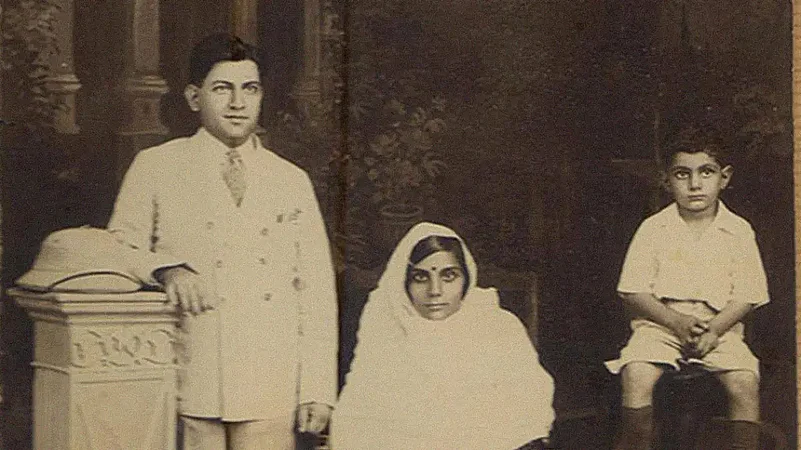Have you heard of Anna Hari Salunke? He is credited to be the first person to perform as a heroine in Indian cinema when he played the role of Rani Taramati of King Harishchandra in Dada Saheb Phalke’s first full-length film, Raja Harishchandra (1913). In 1917, Salunke became the first to play a double gender role in Indian cinema, by playing the roles of both the hero as well as heroine in Lanka Dahan.
There are many names associated with our long-standing cinema tradition that have faded into oblivion. Cinema that provided a sense of relief even during the tumultuous colonial times. But, a collection of sepia-toned photographs, on the website on Indian Memory Project, allows you to learn more about the stalwarts of cinema, who are, infact, India’s first ‘Cinema Citizens’.
The rise of cinema, the fight for Independence, the partition. These are not simply moments in time; they are an integral aspect of our historical heritage. And archiving these smaller histories from India’s timeline is Anusha Yadav, founder of the Indian Memory Project (IMP) which is a visual and narrative based online archive that traces the histories and identities of the Indian Subcontinent, via photographs found in personal archives.
“An archive is used for references, to understand what the world is made up of. These stories are how people want to understand their past. And I have always been interested in photography; not just the technical and cultural aspect of it, but also about the people in front of the lens. These people were born and they lived a life. When I started IMP, it was an experiment; I wanted to see how if I put pictures and categorise them, they are bound to share some keywords. It is all anthropological evidence! Tracing the history of an art form, such as photography, can expose to you how the world evolved,” Yadav explains.

It was the same emotion that drove her to create Cinema Citizens, a sub-project that focuses on the people who created the industry that is now a behemoth. “For ordinary junta, there is no knowledge about the origins of the industry. Women opening studios, Gujarati traders who became pioneers of films. It is incredible. A lot of these people migrated to Pakistan post the Partition. This information was scattered, and I wanted to summarise their stories in one place,” Yadav narrates.
Her archival process for the project, which was started in 2010, involves asking a plethora of questions. “The photographs collected for the project are mostly crowdsourced. Sometimes people send them to us, sometimes I find interesting pictures or a person who has a fascinating story. But we have certain checks in place. Yet, the focus is not on factual accuracy; people do get years and dates wrong,” she tells us. As a curator and photo archivist, what really helps is Yadav’s interest in forming connections with people. “A story is understood by two people - the person who tells it and the person who listens. And each time, that story changes, in emotion, in form, and that’s the beauty of a story.”
Indian Memory Project’s Instagram is filled with small anecdotes that tell the stories behind one veritable object - a photograph. A self-portrait of Yadav with her father is one of her favourites, but her knack for storytelling is a gift from her mother’s side. A collage of these six women of her family forms the cover image of the project’s page on Instagram. “My aunt started the whole storytelling journey, and it stayed with me.”
And in this journey of storytelling, she is not alone. On why there are now many organisations that are archiving India’s historical legacy, Yadav says, “It is always interesting to poke at a piece of evidence from different points of views. Some pursue it academically, some are focussed on objects, letters; I focus on photographs and there is enough material to fuel 65 more organisations. The subcontinent is not quite what we thought; there is a lot more that went down and many more stories to tell. The driving force for me is curiosity. This is the way I learn something new, so there is never a dull moment!”
















